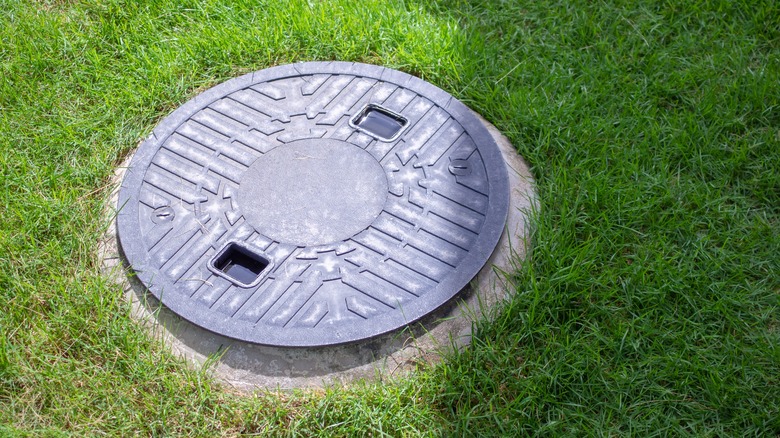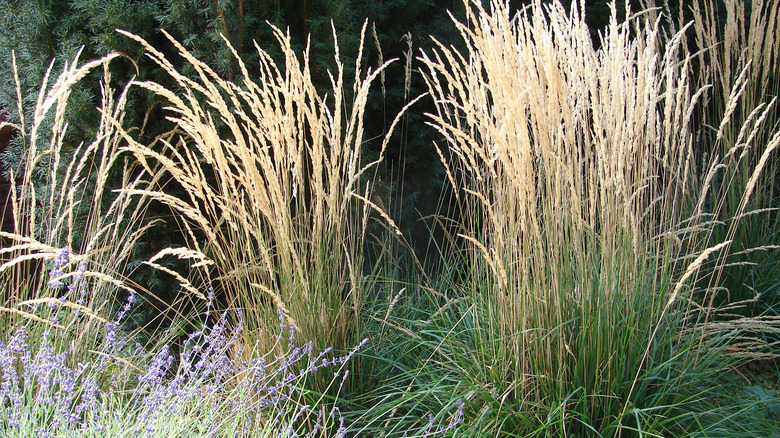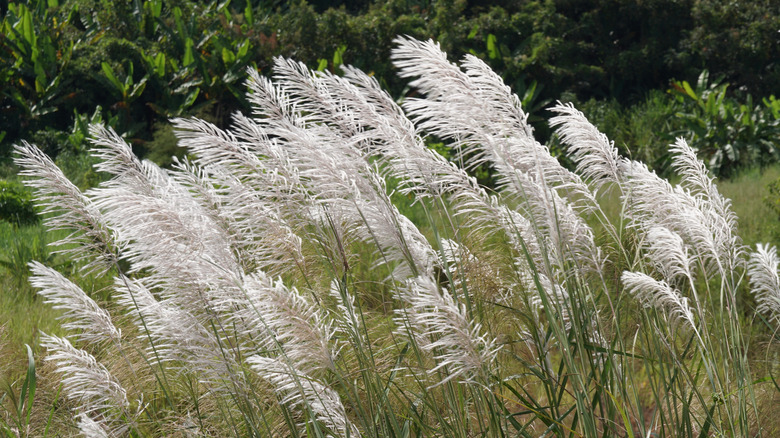Here Is A Clever Way To Hide That Unsightly Septic Tank In Your Yard
If you're not hooked up to the municipal sewer line and have a septic system, then you have a septic tank somewhere on your property. While these tanks are often concealed underground, they can still be somewhat noticeable. For example, you might see a small mound of soil marring the grass, indicating that it's buried underneath. Also, while septic tank lids are usually hidden beneath the grass, your yard might have a lid riser installed, which positions the cover on the surface for easier access. If you want to block either of these imperfections from your yard, then you can use ornamental grass as attractive camouflage. This landscaping staple is not only safe to grow near the septic tank, but it also acts like a screen thanks to its tall and bushy nature.
Not only is it a simple way to hide your unattractive septic tank, but it's also a great plant to add to your backyard overall. That's because it doesn't have many issues with pests and is drought-tolerant, so it can survive with some neglect. This makes it perfect for newbie and seasoned gardeners alike. Here is why ornamental grass is the perfect solution for your landscaping issue.
Ornamental grass won't harm the septic tank
When deciding what to grow near your septic tank, you need to ensure the plant doesn't have an invasive root system that can wrap around the tank and pipes, damaging it. In general, you want to avoid trees and shrubs that proliferate — which means their roots grow quickly as well — and hungrily seek water. For example, weeping willows and river birches are ill-famed for their thirsty root systems, which seek water sources in the ground and quickly grow towards them — which can wreak havoc on your septic system.
Instead, you want to look for plants with shallow roots, such as ornamental grasses. Not only will your septic system stay safe from their roots, but their frothy leaves can provide both height and width in terms of cover. Tall grasses such as Calamagrostis can grow up to 6 feet tall even though they have shallow roots, easily hiding any soil mounds or elevated lid covers. However, if you don't want to add height to your landscaping, you can instead choose an ornamental grass such as the Japanese Forest Grass, which grows in large, bushy mounds thanks to its 10-inch long leaves, easily covering your septic tank access point.
Caveats to keep in mind
One negative about planting ornamental grasses to disguise your septic tank is that you might need to tear some of them out if you have to service the tank or pipes. However, septic tanks only need to be inspected and pumped every three to five years, so removing them shouldn't be a frequent endeavor.
Another major caveat to keep in mind is that not all ornamental grasses have shallow roots — so be sure to research the specific species you have in mind to ensure they don't have a deep root system. Pampas grass is a fan-favorite ornamental grass, and its considerable height can definitely help hide your septic system. But its root system can grow to 10 feet long, making it a dangerous pick to grow near your tank. Similarly, miscanthus, or silvergrass, has roots that can grow up to 8 feet long, making it inappropriate for planting in the area.


